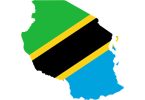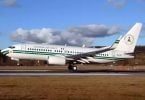The financial crisis is affecting all countries in Southeast Asia. Less exposed until today, the Philippines is likely to experience a slowdown of its growth rates. But Oscar Palabyab remains optimistic about the capacity of the Philippines to reach the 5 million tourists target. Even if this objective might be delayed by one more year.
How is tourism doing this year so far?
Oscar Palabyab: The financial crisis has, of course, consequences in the evolution of our tourism with numbers progressing at a slower pace. Like in other countries, the Philippines suffer from surging costs for transportation. So far, international tourist arrivals grew by 6% for the first seven months of 2008, a remarkable achievement in the current market conditions. However, we must remember that we have experienced over the last two years average growth rates of 35% to 40%! Current tourism evolution is supported by surging numbers of travelers from Korea and Europe. ASEAN countries are also very dynamic thanks to more capacities and flights from low-cost carriers. These markets help to balance declining volumes from the USA and Japan.
Do you think that the 5 million tourists target in 2010 is still possible?
Oscar Palabyab: We certainly will have to look back at this target and make some adjustments. At the same time, the slowdown will take out some of the pressure to develop quickly capacities. Our biggest problem is still a lack of air capacity and an insufficient number of rooms. We will not be able to grow properly as long as we cannot adjust our capacities. That means to add at least another 23,000 rooms with an average occupancy rate of 70%. If we reach 80, we would need an additional 30,000 rooms to accommodate travelers’ needs. The government is also doing a gigantic effort to boost infrastructure to better connect our isles. It translates into new ports for cruise ships or ferries, new airports, theme parks, etc. In total, the country invests in over 150 projects related to transport and tourism.
What are the requirements in air transport?
Oscar Palabyab: Our biggest concern is the lack of European flights. We are only linked by a daily flight of KLM out of Amsterdam after Lufthansa pulled out last year. They were even rumors of KLM stopping to fly to Manila but Lufthansa’s departure helped to keep them. We cannot force PAL to fly back to Europe as they are a private airline and are out of any political meltdown. We are negotiating more liberal air agreements with various countries to boost capacity, with the department of tourism being an active member of the air panel. But this is true that we should maybe think to provide incentives to airlines to fly. Regarding low cost airlines, we catch up now with the rest of Southeast Asia, especially as Clark Airport, near Manila, benefits from a total open-skies policy.
The Philippines still lack the notoriety of other destinations in the region. Do you consider this as an asset today?
Oscar Palabyab: Of course, a lack of notoriety is never good but, at the same time, the Philippines have been able to forge a positive image for peculiar niche markets. We are considered, for example, as one of the best destinations in the world for diving, and we attract many Europeans in this activity. Adventure tourism, English learning tourism for ASEAN students, honeymoon packages and also medical tourism are some of the niches we identify with good potential for growth.
Do you think that the Philippines escaped woes linked to overdevelopment along the coast as seen in other countries?
Oscar Palabyab: Delays in the development of our infrastructure can be seen as an asset today. By comparison to some countries in the regions, our landscapes or beaches are still in pristine conditions. We certainly made in the past some mistakes, especially for Boracay or Cebu. But we are now looking at ways to correct previous woes from large real estate projects. We now try to educate and advocate sustainable tourism development. We really want a quality tourist in places such as Palawan, Bohol or Samar island. And we want also to be perceived as a country where landscapes and people are still unspoiled by massive commercial tourism.






















